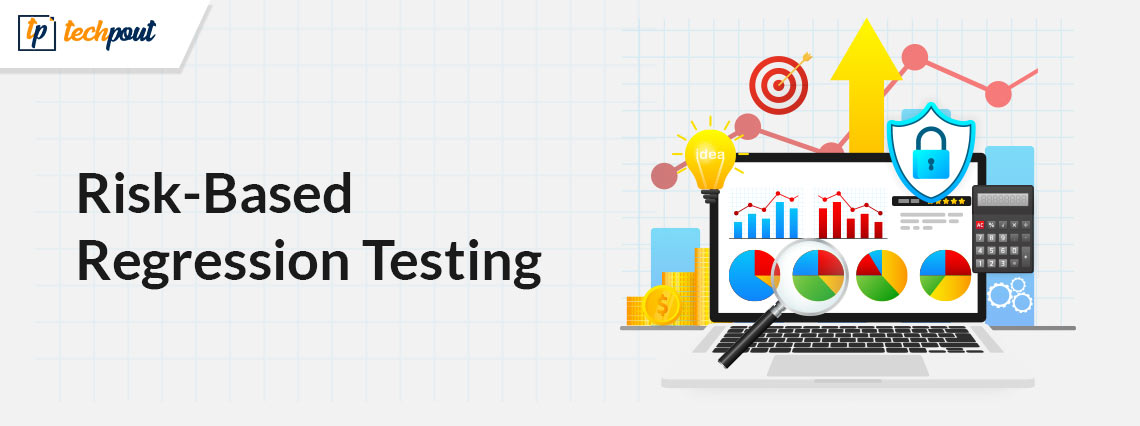Risk-Based Regression Testing: Strategic Testing to Reduce Software Vulnerabilities

Regression testing is essential in the realm of software development. It ensures that software modifications or upgrades don’t bring any unwanted flaws or problems. Traditional regression testing, however, may be difficult and time-consuming. Regression testing based on risk can be used in this situation. It’s a calculated strategy that concentrates testing efforts on software components most likely to have flaws or have an influence on vital features. In this post, we’ll introduce the idea of risk-based regression testing, discuss it, and lay out its goals. Software engineers can more effectively minimize software vulnerabilities by using this strategy.
Understanding Risk-Based Regression Testing
A method of software testing called risk-based regression testing places priority on the risks that have been identified. It entails comprehending the possible hazards of software modifications and then concentrating testing efforts on the most vulnerable locations. Risk-based regression testing evaluates the effect and likelihood of risks, and the testing scope is determined using the results. Focusing on high-risk regions, vital features, and possible weak points will be properly examined. Risk identification, analysis, prioritization, and reduction are important tenets of risk-based regression testing. These guidelines specify the amount of testing necessary for each identified risk and direct the selection of test cases. Risk-based regression testing has various advantages over conventional regression testing. Directing resources toward high-risk regions streamlines testing efforts while reducing testing time. Additionally, it increases test coverage and finds serious flaws sooner in the software development process. The information provided by Functionize’s insights on regression testing tools helps put risk-based regression testing into practice by enabling efficient risk assessment, test case selection, and result analysis.
Risk Assessment and Prioritization
It’s critical to recognize possible risks and vulnerabilities while developing software. By doing this, we may prevent them by taking preventive actions. Investigate the typical categories of software vulnerabilities and their origins. Weaknesses that attackers can take advantage of are common forms of software vulnerabilities. They include direct object references that aren’t secure, SQL injection, cross-site scripting (XSS), and buffer overflows. These flaws might result in data breaches, illegal access, and system failures. Risks and vulnerabilities come from a variety of sources. They may result from faulty programming, insufficient input validation, shoddy authentication procedures, or unsafe data storage. Additionally, if not properly maintained or updated, third-party libraries or components used in software might pose vulnerabilities. To successfully analyze risks, we use two basic techniques: qualitative risk assessment and quantitative risk assessment.
Qualitative risk assessment
Risks are assessed qualitatively by looking at their likelihood and possible impact. Prioritizing risks is done using expert opinion and arbitrary analysis. It assists in locating risky locations that demand rapid care.
Quantitative risk assessment
Quantitative risk assessment, on the other hand, entails giving hazards numerical numbers, such as their likelihood of occurring and their financial effect. This approach facilitates decision-making processes and allows for a more objective assessment of risks.
Prioritizing risks according to their importance and severity after they have been evaluated is crucial. This makes it possible to allocate resources and focus usefully on important areas. The possible effects of each risk are considered when determining its severity levels, and impact analysis methodologies are used to calculate how each risk will affect various program components.
Test Selection and Design
We must establish proper test coverage requirements to guarantee complete testing. Let’s examine three often-used standards: risk-based coverage, functional coverage, and code coverage. We use several ways to choose the best exams. The software’s most important and high-risk portions are the subject of critical area testing. Test cases are prioritized according to the significance and likelihood of related hazards in risk-driven test selection. By taking into account software changes, regression test selection approaches seek to optimize the selection of test cases. We use many design strategies for efficient regression testing. Equivalence partitioning includes categorizing the input data to reduce the number of unnecessary test cases. Testing the borders between these classes is the main goal of boundary value analysis. Error guessing depends on instinct and knowledge to spot probable mistakes. Mutation testing includes injecting fake flaws into the software to assess how well the test suite works.
Evaluating and Improving Risk-Based Regression Testing
We use various metrics and measures to assess the success of risk-based regression testing. The defect detection rate indicates the percentage of problems found during testing. Metrics for test coverage evaluate how thoroughly the software has been tested. Measures of cost-effectiveness aid in determining how effectively resources are used in the testing process. We can pinpoint areas for improvement by analyzing test data. Finding the fundamental reasons for flaws and vulnerabilities is made easier by root cause analysis. Sharing expertise and learning from mistakes allows for collecting insightful knowledge that will improve testing efforts in the future. Optimizing the whole testing procedure is necessary for risk-based regression testing’s ongoing progress. This entails improving testing procedures, considering criticism from prior experiences, and using lessons learned to improve subsequent testing cycles.
Conclusion
Regression testing that takes into account risk is essential for reducing software vulnerabilities. We can reduce the possibility of undetected vulnerabilities by identifying risks, prioritizing them, and conducting focused tests. We must assess the success of our testing efforts through metrics and statistics and always work to improve. Future trends and improvements in risk-based testing, which will provide more reliable and secure software systems, are something we can anticipate as software development progresses.


